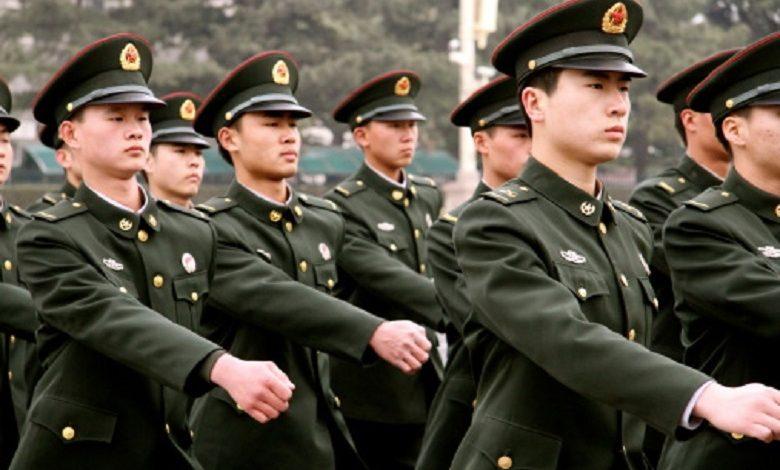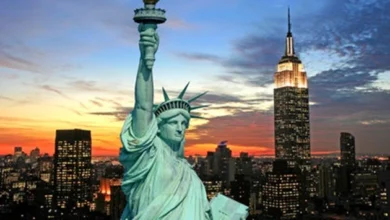Bloody battles in the Himalayas: “Indian army is really no match to Chinese army”

Despite declarations of appeasement, the series of clashes between China and India on their border, ill-defined in altitude and 3,300 km long, is worrying. Tensions from which India could well emerge defeated, according to General Alain Lamballe, a specialist in South Asia.
A barehanded struggle on the roof of the world between two nuclear powers… The Chinese People’s Army (PLA) and the Indian army are fighting over the Ladakh region, in the Himalayas, at an altitude of more than 4,000 meters. An area called by Beijing “Southern Tibet”. On June 20, a violent clash took place in the body-to-body, killing 20 people on the Indian side, the Chinese toll remaining unknown.
Will these sporadic shocks lead to armed conflict? Faced with Chinese hegemony in the region, is India really able to keep the territories it considers its own?
According to the interview by Sputnik, General Alain Lamballe, a specialist in South Asia, research director at the French Intelligence Research Center and researcher at Asia 21, minimizes the possibility of a conventional war: “India which feels attacked does not have the possibility of leading a strong fight against the Chinese because the Indian army is really no match for the Chinese army”.
“This is ultra-sophisticated, much better structured with a single joint command in Chengdu, which is not the case, on the Indian side […] There may be local slippages, but I do not believe that this will lead to a major and generalized conflict.”
“Several neighboring countries are encouraged by the United States to confront China,” said journalist Hu Xijin, in the Global Times.
Clearly targeting the Indian neighbor, the Chinese daily also calls on its population to have “really the courage to engage calmly in a war the aim of which is to protect fundamental interests, and to be ready to bear the cost”.
Belligerent remarks perfectly illustrate the tensions between Beijing and New Delhi, following several clashes along their shared border in the Himalayas. And despite declarations of appeasement on both sides, a new skirmish took place on September 8, each accusing each other of having carried out “warning shots”.
If a conventional war between the two nuclear powers seems excluded, “local slippages” could, however, worsen their bilateral relations. And as the Chinese newspaper denounces, could the United States engage alongside India in order to further isolate Beijing?
Alain Lamballe is categorical. Regarding the more and more regular skirmishes in Ladakh and Aksai Chin, the “aggressor country” is China. This would try to “recover as much territory as possible” along this very ill-defined border, “almost all of Aksai Chin” being in the hands of the Chinese.
“China is much more powerful than India militarily”
According to the general, Beijing has two objectives: “to cut India off from Xinjiang”, this desert and mountainous region in northwest China, and to widen the border with its Pakistani ally.
“The Chinese seek to encircle India by the corridor created in Pakistan – economic corridor which connects Xinjiang to the Arabian Sea – and by similar corridors on the Burma side. There is also a certain willingness from China to surround India with Bangladesh.”
A policy which has been solidly structured for years, unlike Indian negligence, “because they did not really believe in a Chinese threat”. The South Asian specialist thus enumerates the military deficiencies in New Delhi, from the disorder of the high command to the shortages of manpower, materials, and logistics.
“India is absolutely not in a position to face China. China is much more powerful than India militarily. It is also much better equipped with road infrastructure. Both in Xinjiang and Tibet, the road networks are excellent, which allows the Chinese to transport soldiers extremely quickly if they want to on this unspecified border. In addition, the Chinese have built extremely sophisticated bunkers, it seems, heated, meaning that the troops are in perfect condition to fight if necessary.”
So India would not be in a position to wage a high-intensity conflict with Beijing. Following such a finding of weakness, New Delhi would have gradually turned to the West.
The Indians “are looking for allies on the western side”
First customer of the French arms industry for ten years, with more than 13 billion euros in orders, India is trying to modernize its military equipment in all directions. On the occasion of a whirlwind visit, Florence Parly went on September 10 to the Ambala airbase (far north), on the borders of Pakistan, Kashmir, and China.
The Minister of the Armed Forces was thus accompanying the delivery of five Rafale fighter jets, as part of an order for 36 aircraft. “We are writing a new chapter in defense relations between India and France,” which share “a strong and lasting friendship,” she said.
India also maintains, as Alain Lamballe reminds us, long-standing proximity to Moscow. But since Russia is also “very close to China”, he considers that further development of their relations would be “delicate”.
“The Indians consider themselves attacked and they are looking for allies on the western side”, explains the specialist, who, however, minimizes current relations with Washington: “The Indians are developing their military relations, especially with the United States. The United States sells military equipment to India, which was not the case before […] It is not a real alliance, really. These are links that concern the supply of equipment, joint exercises, and obviously the extremely powerful American support in the diplomatic field.”
Personal relations between Narendra Modi and his American counterpart are also in good shape. We remember their giant meeting in February 2020 in India, entitled “Namaste Trump” in a cricket stadium welcoming more than 100,000 people.
Since Barack Obama, the White House has launched the pivot strategy, which aims to refocus American foreign policy on Asia, taking into account the geopolitical assertion of Chinese power. With his trade war, Donald Trump has only perpetuated this trend, to contain or even isolate Beijing in the Indo-Pacific zone, particularly in the South China Sea.
It is in this context that “the United States has every interest in allying with India because they want to contain China”, concludes Alain Lamballe.
Thus, the encirclement of India by China could well end up turning against it.




